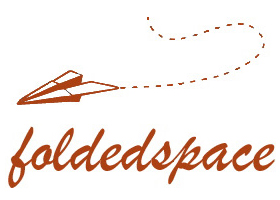Since learning about it in Mrs. Clarke’s third-grade class (back in 1978), I’ve been a fan of the metric system, though I rarely use it. As Americans, we’re surrounded by archaic units of measure — we’re immersed in them. At the box factory, I deal in inches and fractions-of-inches all day long. (We also deal with a base-sixteen world here. I can convert sixteenths nearly as easily as tenths.)
For me, one of the most confusing aspects of the metric system has been temperature. I understand that to convert fahrenheit to celsius, one subtracts thirty-two and multiplies by nine-fifths. Or five-ninths. Or whatever. I understand this intellectually, but for some reason, the whole procedure is so semantically complex that I’ve never bothered.
In a recent AskMetafilter thread on the metric system, somebody restated the problem in a way that suddenly made sense to me: don’t think “nine-fifths”, think “1.8”. Yes, I know these are identical terms, and I should have done my own conversion long ago. But I never have. Now, after learning to use “1.8”, the whole fahrenheit-celsius conversion thing is a piece of cake. It was instantaneously clear. Everything clicks.
0 degrees celsius is 32 degrees fahrenheit (cold)
10 degrees celsius is 50 degrees fahrenheit (cool)
20 degrees celsius is 68 degrees fahrenheit (room temperature)
30 degrees celsius is 86 degrees fahrenheit (warm)
40 degrees celsius is 104 degrees fahrenheit (hot)
Now I can add temperature to my metric arsenal. (Ironically, it interests me less to know that I way 86 kilograms in metric than to know that I weigh 13-1/2 stone in whatever antiquated British system uses that for a measure. I’ve always thought that stoneweight was fun!)
For sheer complexity, I don’t know of anything more confusing than the British monetary system before decimalizaton.
OLD MONEY NEW MONEY (after 1971)
� (libra) = pound � = pound
s (solidus) = shilling
d (denarius) = penny/pence p = [new] penny/pence (pee)
�1,3/6 = 1 pound, 3 shillings, 6 pence �1.50 = 1 pound, 50 pence
-----------------------------------------------------------------------
OLD COIN/NOTE VALUE NEW COINS
farthing 1/4 d
halfpenny (ha'penny) 1/2 d
penny (copper) 1 d
..............................................1/2 p (discontinued)
twopence (tuppence) 2 d
-a silver coin, pre-1643, and a copper coin from the reign of
George III (1738-1820).
................................................1 p
threepence (thruppence) 3 d
groat 1351-1662 4 d
fourpence 1836-1856 4 d
................................................2 p
sixpence (tanner) 6 d
-note this is not the same as the tenner, a 10-shilling note.
shilling (bob) 12 d...........5 p
florin 2 s..........10 p
half crown 2/6
crown 5 s
-a commemorative coin, rather than common currency.
half-sovereign/half-pound 10 s..........50 p
-the half-sovereign and sovereign coins were gold and worth
far more than the equivalent notes, at least in the 20th century.
sovereign/pound (quid) 20 s...........�1 coin & note = 100 p
-the modern 50p and �1 coins are not gold.
guinea 21 s equiv �1.05
-the guinea has not been minted since 1813, but professional
fees and prices for luxury items are still quoted in guineas.
For even more info, check out the wikipedia article. (Last night, Andrew and I had a conversation about determining the value of various monetary sums mentioned in Patrick O’Brian and Jane Austen novels. This page has some info on the subject (look to the bottom).)

One of the things we struggle with here at work is trying to convert liters, cubic inches and horsepower. No formula ever seems to work well.